Best dog nail clippers: Keep your pup's paws in good shape
The best dog nail clippers prevent breakages and give pooches a perfect paw-dicure
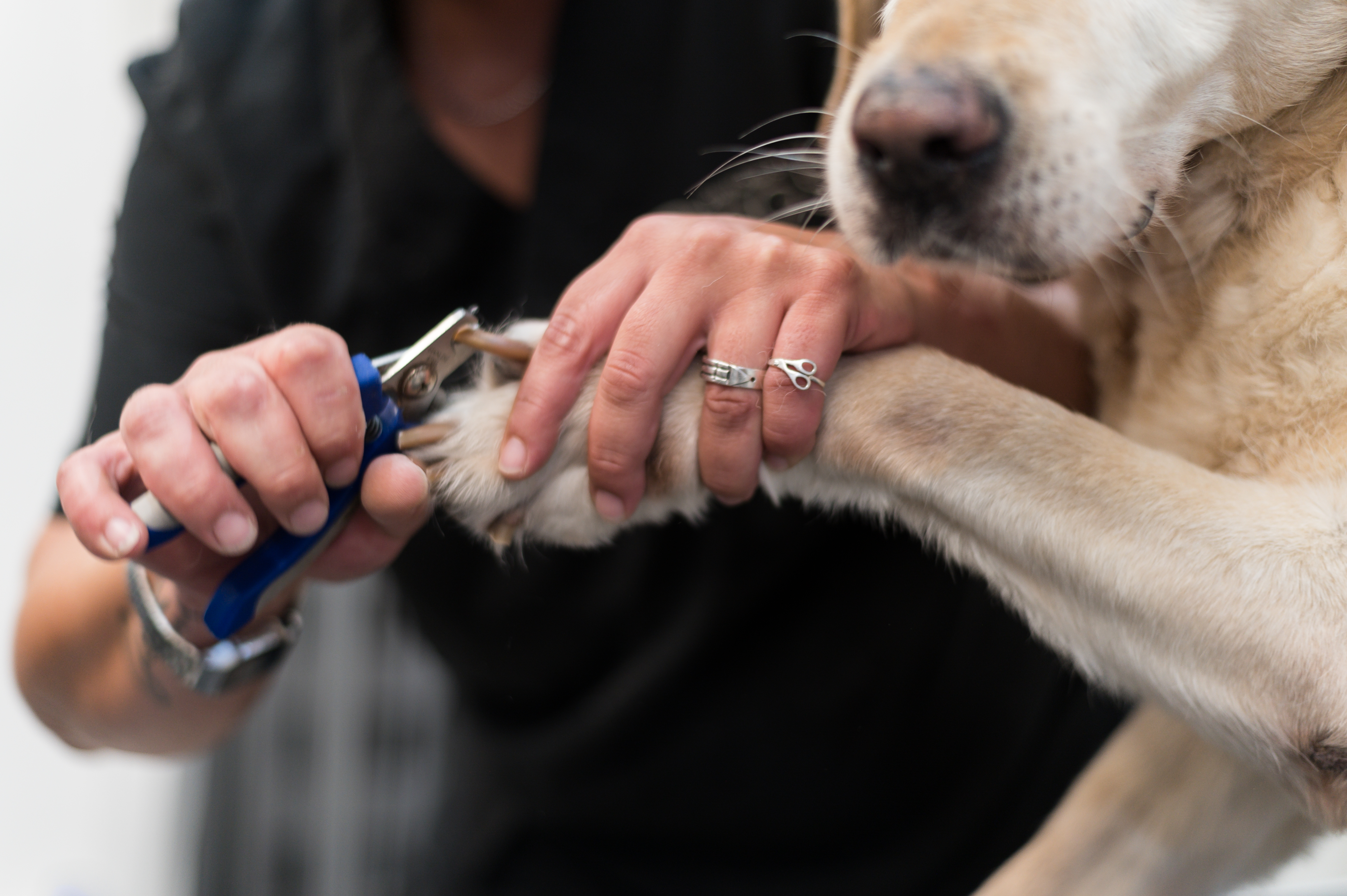
With the best dog nail clippers, you’ll be able to pamper your pooch’s paws while ensuring your pet remains in good health. While your dog may not be a fan, keeping their nails trimmed is crucial to their health and happiness. Overgrown nails can affect their ability to walk and broken nails can be painful and lead to more problems down the line.
In this guide, we’ve gathered together a variety of clippers that would be worthy of a spot in any of the best dog grooming kits. So long as you know how to clip a dog's nails, you’ll find you can use these products with confidence whether you’re a beginner or an experienced groomer.
They include both plier-style and guillotine-style clippers, although it’s also worth considering the best nail grinders for pets if you find your dog is running for cover the minute you try and groom them. One thing’s for sure, you do need the best dog nail clippers to hand for your pooch.
“If you decide to clip your dog’s nails at home – which isn’t a bad idea if you feel capable because it means less frequent visits to the vet or groomer – it’s important to choose the right clipper style for your dog,” affirms expert vet Dr. Hannah Godfrey. So let’s take a look at the best dog nail clippers on the market today.
Best dog nail clippers 2025
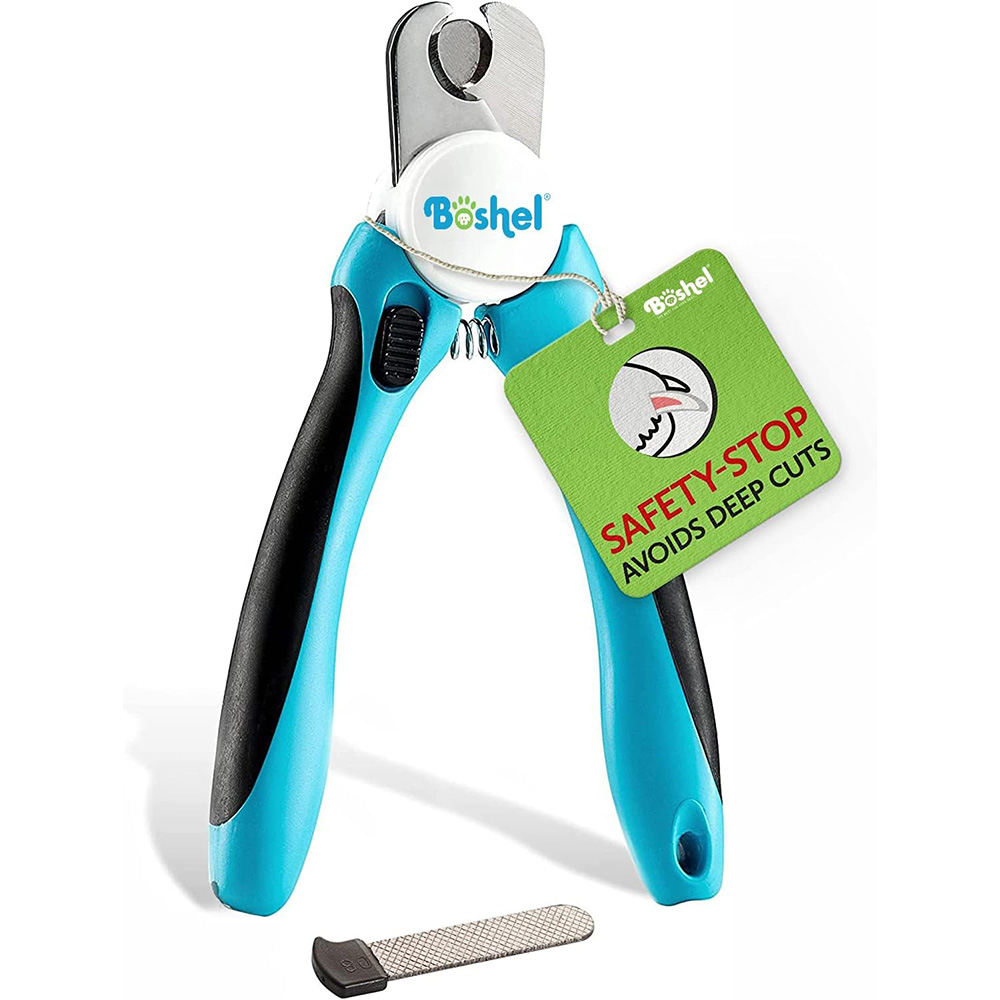
Best overall dog nail clippers
Recommended by professional groomers, animal trainers and vets, this high-quality nail clipper from Boshel has an ergonomic design with easy-grip, non-slip handle that make it a breeze to use.
The 3.5mm thick stainless steel blades ensure it only takes one cut to cleanly trim each nail and there’s an integrated safety stop which makes it almost impossible to cut too deep.
A safe storage switch means you can lock the blade away when you’re not using the clippers – a great feature if you have young children at home. The clippers also come with a nail file which stores conveniently in the handle, letting you give your dog a full salon experience and shape their nails after you’ve trimmed them.
Granted, its large size means it’s not a great choice for small dogs, but for medium or large breeds it gets our vote every time.
Reasons to buy: Offering a clean cut each time and a safety stop, these clippers set the standard
Reasons to avoid: They can be difficult to use on small dogs due to their large size
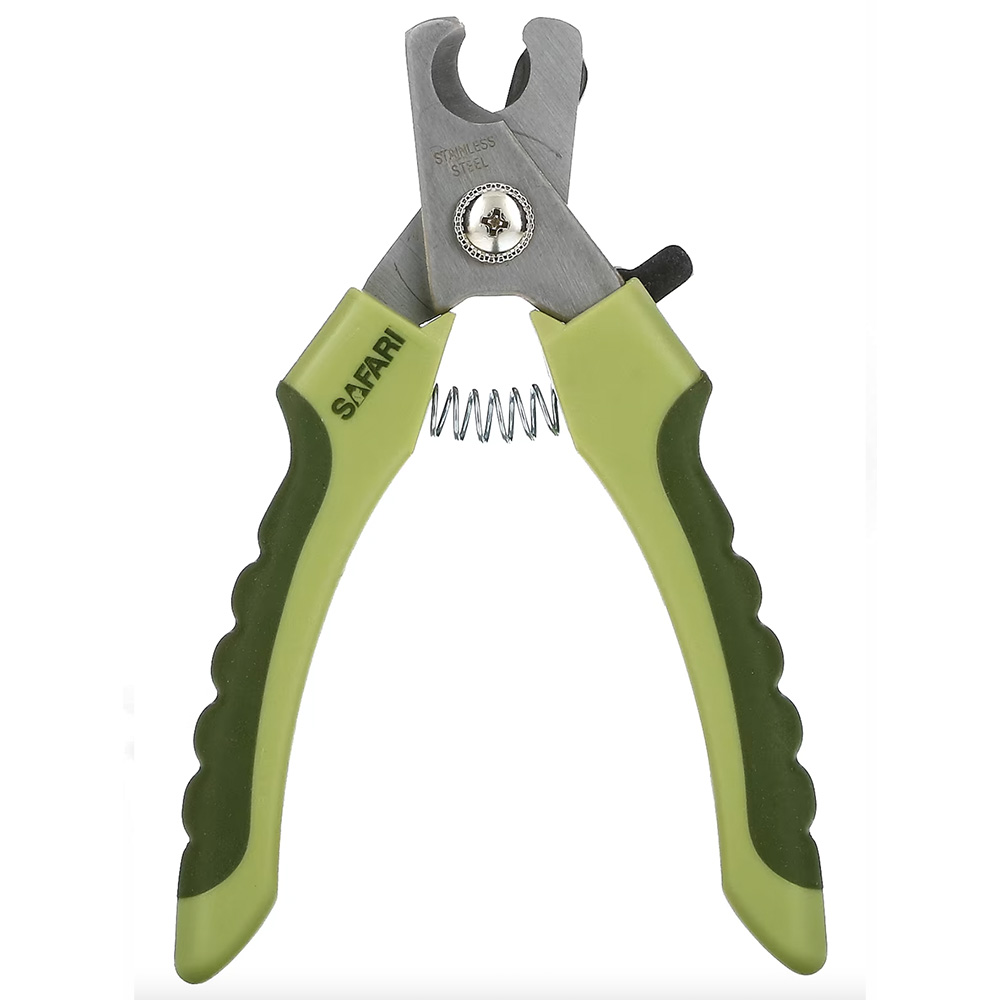
Best dog nail clippers for thin nails
Safari’s stainless steel nail clippers come in two sizes (standard and medium-large), so whether you have a small or larger dog, you should be covered with this nifty device. Sharp and offering a clean, precise cut, these are very durable clippers and there’s a very good chance that they will remain a fixture in your household for many years to come
We like that they're very lightweight and have a rubberized grip which offers control and comfort – an important attribute especially if you have a nervous dog. In addition, there is a locking mechanism and a safety stop, which can help to reduce the risk of injury.
Unfortunately, the clippers sometimes struggle with thicker nails so you'll need to apply a significant amount of pressure to cut them in one go, which some dogs may not appreciate. Still, this product is great value for money.
Reasons to buy: With its ergonomic handles and rubberized grip, you can precisely clip in comfort
Reasons to avoid: You may need to apply significant force if you are clipping thick nails
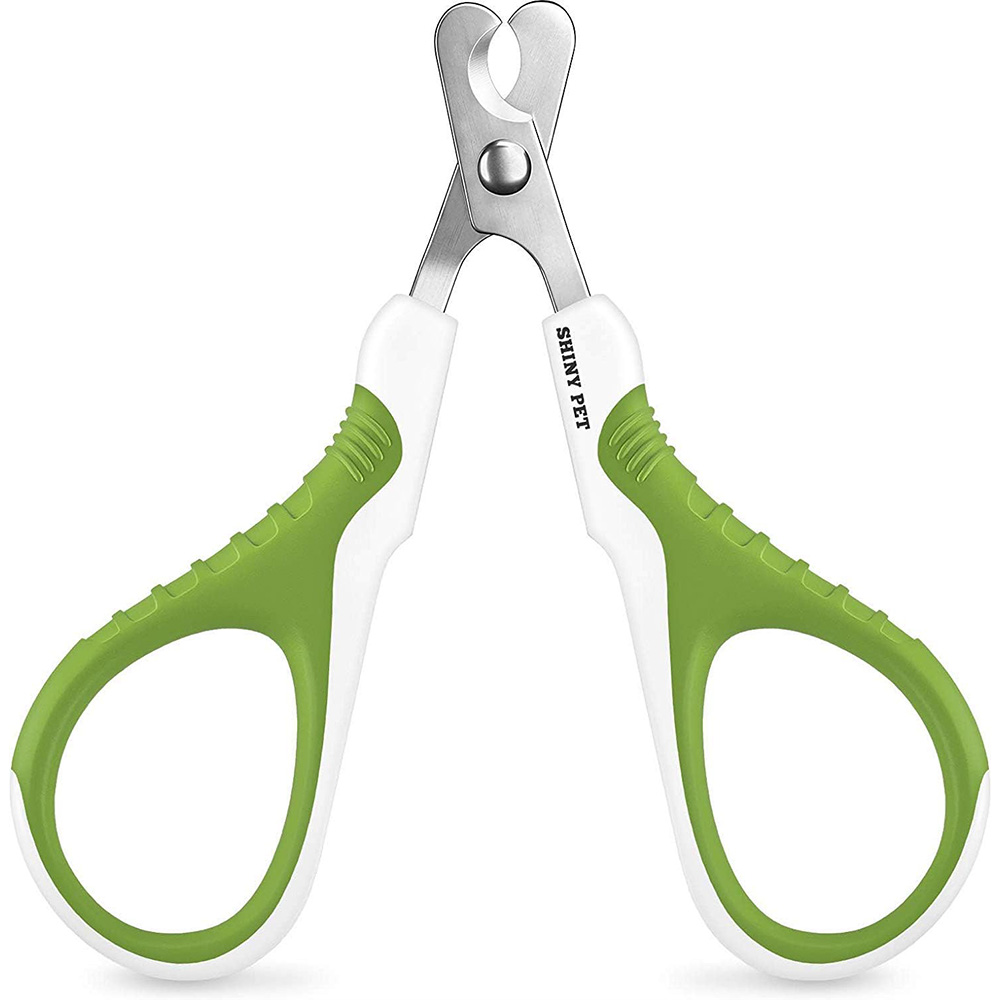
Best for small dogs
These nail clippers look like a pair of scissors and they have been specifically designed for use on small dogs. The rubber grip gives them a comfortable feel in your hands and stops them from slipping while the semi-circular shape of the stainless steel blades gives a clean and precise cut.
Crucially, the windowed opening means that your dog's nail is visible at all times which is great for reducing the risk of injury and, to help you further, you get a free e-book that provides a comprehensive guide on how to cut and trim safely.
A lifetime money-back guarantee is also reassuring. If for any reason you’re not happy with the quality of the clippers you can ship them back and get a refund, no questions asked. The only drawback to this affordable nail clipper is that it’s not spring-loaded, so you may find you’re having to exert more effort when you’re using them.
Reasons to buy: These impressive clippers come with an e-book that helps you to use them safety
Reasons to avoid: They can feel rather stiff when you first use them but they will get better with time
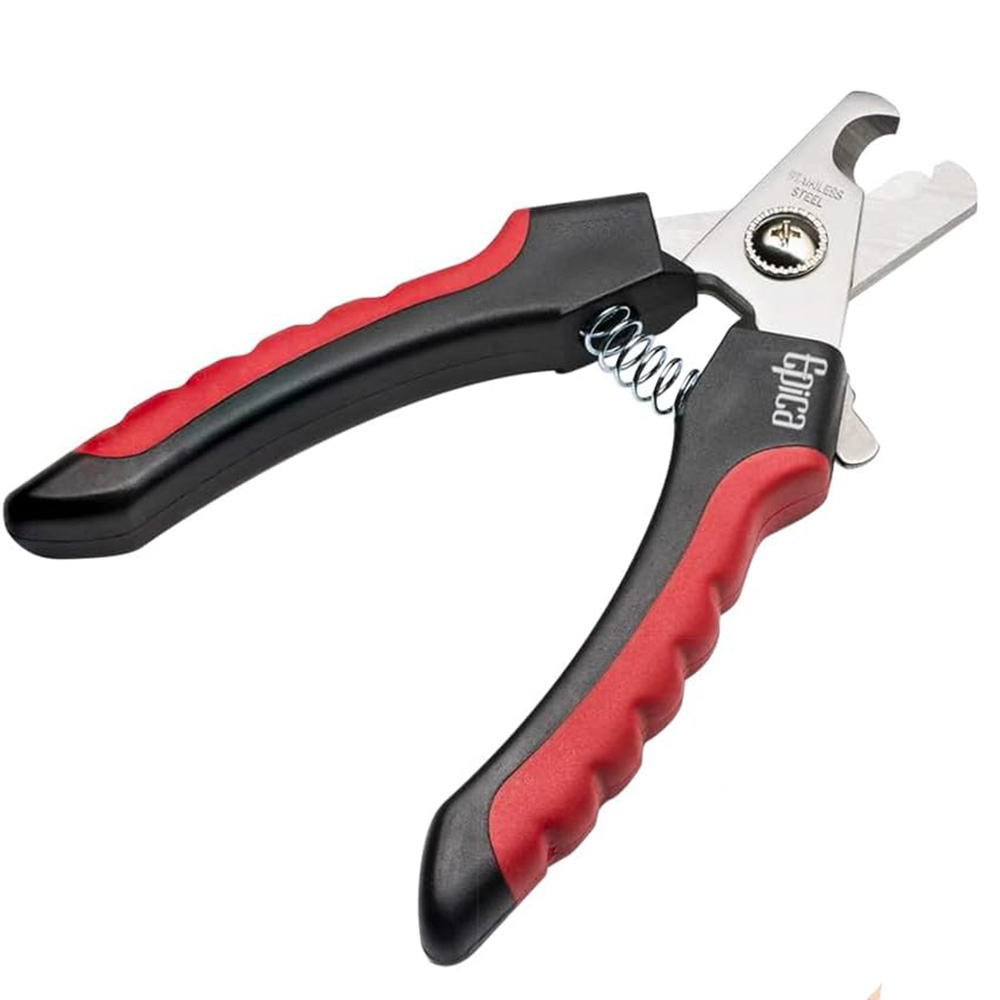
Best for large dogs
Epica’s durable clippers have correctly-spaced stainless steel blades for use on medium and large dogs. These sharp blades also make for an effortless clip. The ergonomic design means the handles are shaped to fit your fingers, providing maximum comfort. You don’t have to hold them super tight to maintain control either; just grasp lightly and apply a normal amount of pressure and your dog’s nails will be looking beautifully manicured before you know it.
As you can probably gather, we’re impressed. The safety feature enables the clippers to be stored away with the blades in a locked position, so you don’t have to worry about accidentally cutting yourself when you’re rummaging through your drawer. There’s also a nail guard, which is optional to use during the nail trimming process to protect from accidental cutting. What’s more, these clippers aren’t going to bend or rust. You’ll get years of use out of them.
Reasons to buy: These clippers have a thoughtful design that takes into account the unique needs of larger breeds
Reasons to avoid: Although it has an automatic lock, the nail guard doesn’t always stay put
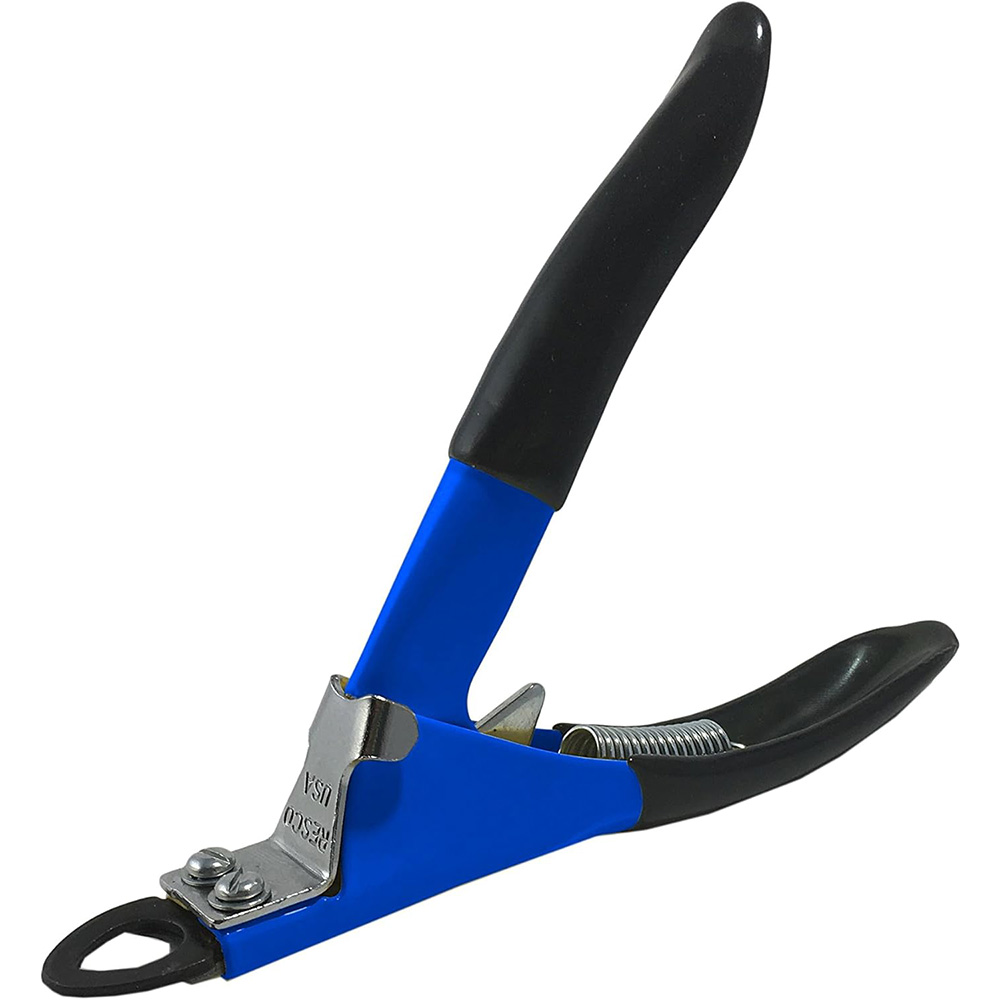
Best guillotine-style dog nail clippers
If you dislike using plier-style nail clippers, it’s worth switching to a guillotine-style. In this case, you’ll get a trimmer made from high-quality steel and featuring a lifetime guarantee. Indeed, these heavy-duty clippers with premium chrome plating are the only ones you’ll ever need.
We love that this trimmer features patented blade replacement technology, which means you can replace the blades when they start to go blunt. The blades are sharp too, so they’ll effortlessly cut through all nails, including super thick ones. With a micro-honed cutting system, you won’t have to worry about split or ragged nails either.
The advantage of using a guillotine-style nail clipper is that it creates a cleaner cut with less force than other types of clippers require. There is a drawback though as there’s no quick-guard safety feature, so you need to take care not to clip too far down the nail.
Reasons to buy: The Resco brand comes highly recommended by veterinarians and groomers
Reasons to avoid: Don’t buy if you’re not comfortable working without a safety stop
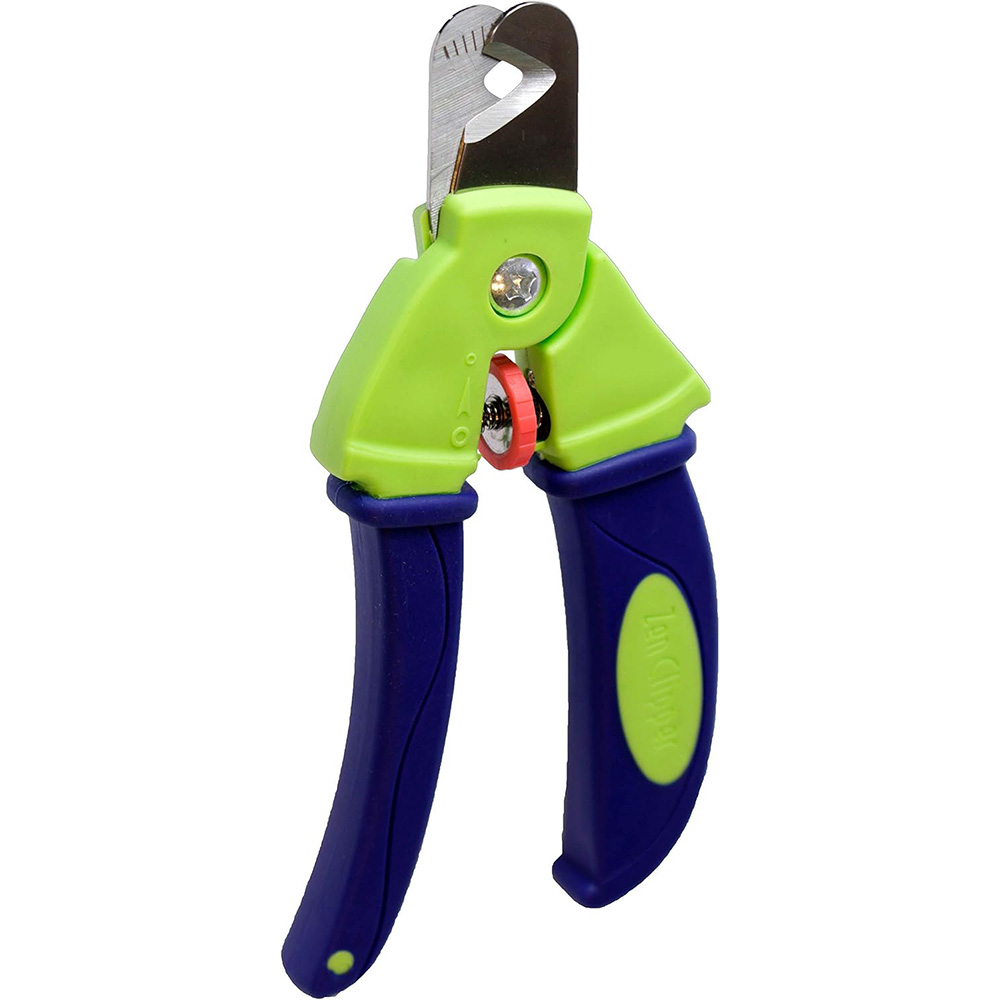
Best adjustable dog nail clippers
The Zen Clipper is an adjustable dog nail trimmer that can be reconfigured to suit the nails of any breed of pup. The unique fully adjustable blade limits the amount of nail being clipped and reduces the risk of over cutting the nails and hurting your pet’s sensitive quick.
To use, simply determine how much nail you want to cut and then use the convenient thumb wheel to adjust the blade. The widest setting is 11m and the narrow setting is 2mm, so you'll easily be able to find the perfect size for your pooch.
The extra sharp blade will cut through even the thickest nails and the laser etched markings ensure consistent measuring. We also love the ergonomic design, which is comfortable to hold and great for arthritis sufferers. The result is a no-stress nail clipping experience for both you and your canine companion.
Reasons to buy: Fully adjustable to suit all breeds, these clippers have a sharp blade and ergonomic design
Reasons to avoid: There is no safety stop so there is a greater risk of causing an injury
How we chose the best dog nail clippers
When testing the best dog nail clippers, we were mindful that it’s not a case of one size suiting all. But, in general, we looked out for safety guards, a clipper’s ability to cut cleanly and how easy they are to control. We assessed how comfortable they are to hold and whether they were difficult to squeeze. We also paid attention to the materials used – clippers need to be sturdy and those made from stainless steel tend to fare better.
When should I begin clipping a dog’s nails?
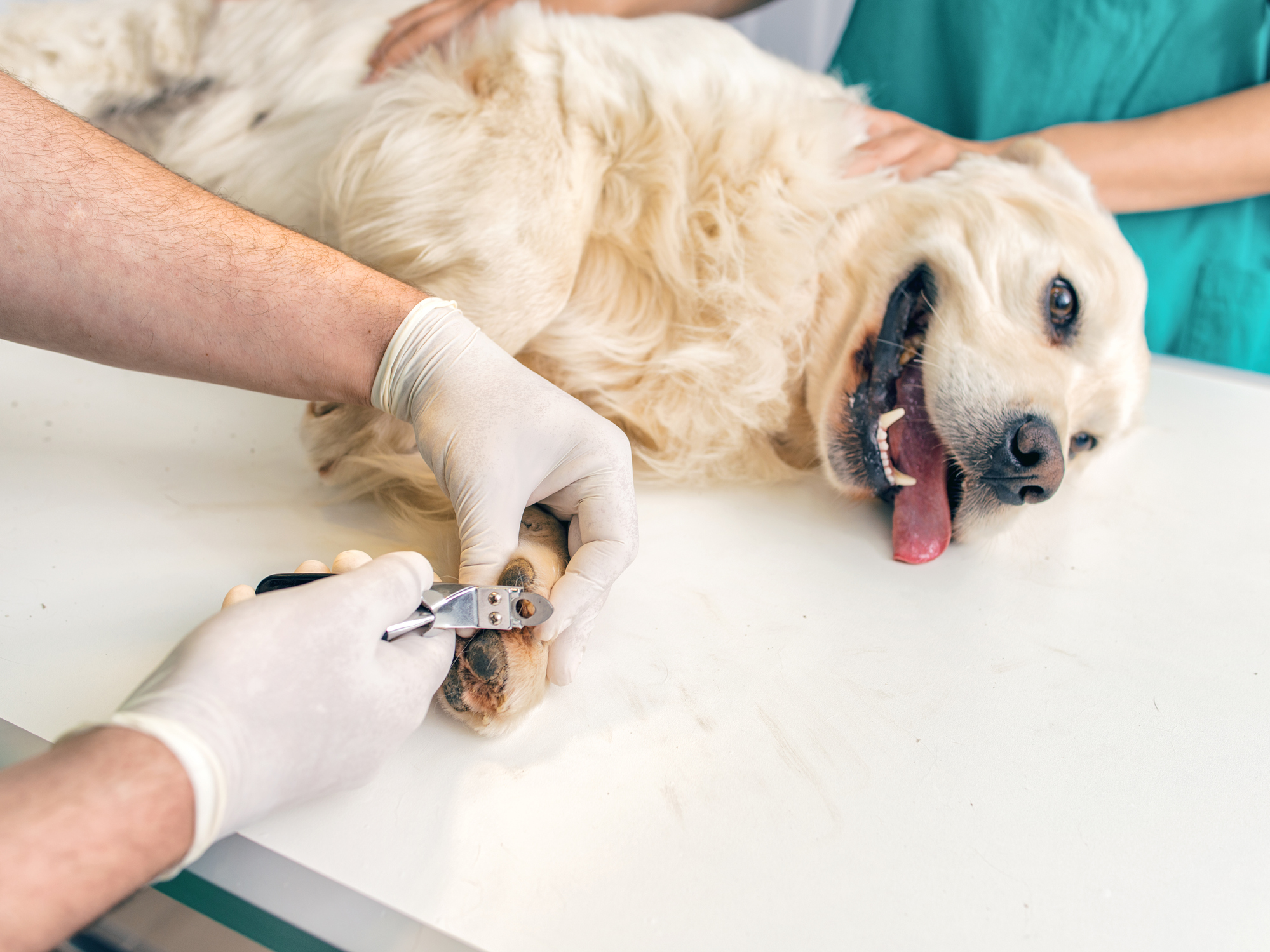
The earlier the better. The hope is that your dog will stay calm and comfortable when clipping their nails and getting them used to trimming from an early age should help. If it isn’t possible to start clipping during the puppy stage – perhaps you have a rescue dog, for instance – then just start whenever you can. Using positive reinforcement such as biscuits after a quick clip can help to train reluctant dogs into allowing you to trim their nails.
What type of clippers should I choose?
Your choice is going to be dependent on your pooch.
“Consider your dog’s temperament – are they patient and tolerant, skittish, or restless and always on the move?,” affirms expert vet Dr Hannah Godfrey. “If they’re likely to try to bolt and make nail clipping into a bit of a struggle, it’s probably not a good idea to choose nail grinders or files, as these can take a long time.”
Instead, scissor-style clippers, also known as pliers, are a good choice for larger breeds and dogs with thick nails. Squeeze the handles together, and the blade will cut off the end of the nail. These often feature a safety stop so you don’t cut too far down and the nail also remains visible, which offers great peace of mind if you’re an inexperienced groomer.
Guillotine-style clippers are a good choice for small and medium-sized dogs because little nails can fit easily into the hole where the tip of the nail is gently sliced off. With no safety stop feature, it can be easy to take off too much of the nail and injure your dog, however, so these are best used by experienced home groomers.
Nail grinders or files do have their place, however.
“If your dog loves nothing better than a cuddle on the couch with you, you might find plenty of time to work away on their nails with a dog nail file,” Dr Godfrey adds.
Just be aware that accidents can still happen, but you are less likely to expose the 'quick' or blood vessel area of the nail. Grinders are also ideal for creating a smooth round edge but you may need to desensitize your dog to the sound. You could opt to use clippers first and then smooth it out with one of the best dog nail files.
Can you use human nail clippers on dogs?
No – human nail clippers are the wrong size and shape for clipping a dog's nails. If you attempt to use human nail clippers, you are likely to scare, or injure your dog.
What size clippers do I need?
As we’ve said, one size doesn’t suit all so choosing the correct size of clippers is important. Small dogs tend to have thinner nails which are easier to cut yet they also have small paws making cutting more difficult. Larger breeds have thicker or longer nails that are more difficult to cut yet they have larger paws so cutting feels less fiddly.
To that end, go for smaller clippers for smaller dogs and larger clippers for larger dogs.
“Too small, and you’ll struggle to cut through the entire nail in one go, but too big and you won’t have much control and could damage the surrounding skin, pad, or nail bed,” says Dr Godfrey.
Are clippers or grinders best for dogs who are sensitive to noise?
You may have to experiment a little here because no cutting method can avoid making noise. “Neither nail grinders nor clippers are silent, sadly,” says Dr Godfrey. “But your dog may be more reactive to the louder ‘crack’ associated with nail clippers."
Will my clippers last?
You would hope so but the answer to this question depends on the clipper’s quality. Inexpensive options often have blades which dull relatively quickly meaning you'll need to replace them. It’s usually better to go for a higher-quality option but they can be more expensive.
Read now: Why do dogs bite their nails?

After graduating from the Royal Veterinary College in 2011, Dr. Hannah Godfrey BVetMed MRCVS went on to work in a busy practice dealing with animals of all shapes and sizes. She’s since found a love of smaller animals and now works in a small companion animal practice in Wales, where she combines her love of animals with her love of writing.
Get the best advice, tips and top tech for your beloved Pets

Kathryn is a freelance writer who has been a member of the PetsRadar family since it launched in 2020. Highly experienced in her field, she's driven by a desire to provide pet parents with accurate, timely, and informative content that enables them to provide their fur friends with everything they need to thrive.
Kathryn works closely with vets and trainers to ensure all articles offer the most up-to-date information across a range of pet-related fields, from insights into health and behavior issues to tips on products and training.
When she’s not busy crafting the perfect sentence for her features, buying guides and news pieces, she can be found hanging out with her family (which includes one super sassy cat and a kitten), drinking copious amounts of Jasmine tea and reading all the books.
She has written for a range of publications, including Fit&Well, Top Ten Reviews, LiveScience, Goodto, and Product Hunt.
- David CrookesFreelance writer
- Jen KarnerHigh Yield Editor
